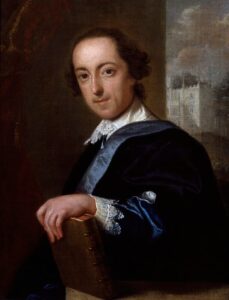THE GOTHIC NOVEL
Origin and Development:
The Gothic novel is also considered a novel based on horror and supernatural. It is a peculiar product of the 18th century. It was a protest against the rational and realistic novel. The Gothic novel is a new species of romantic fiction that draws inspiration from medieval life and art, in pseudo-gothic castles and artificial ruins. They also take inspiration from ancient ballads, Gothic Churches, and Cathedrals.
The term “Gothic” is derived from the word “Goth,” which originally referred to the Goths, a Germanic tribe that played a significant role in the fall of the Roman Empire. In the 16th century, during the Renaissance, the term “Gothic” was used by critics to describe the style of medieval architecture, which was barbaric compared to the classical styles of ancient Rome and Greece.
This type of novel supplies readers with mystery, violent emotion, and narration. It usually takes place in old times with ghosts, and satanic forces with the description of old unhappy, far-off things and battles long ago.
Salient features of the Gothic Novel:
- The villain is the central figure in a Gothic novel. The heroine is beautiful and innocent, full of sensibility awaiting to be rescued by her chivalrous lover.
- The setting is a haunted castle or a ruin with secret passages and dark and gloomy rooms.
- Wild and desolate nature provides a congenial atmosphere for the Gothic novel.
- All the incidents are aided by supernatural elements.
- The thread of romantic love runs throughout the novel
- In the Gothic novel, the past life is depicted rather than the contemporary society.
- Horror is also produced by cold-blooded murders and tragic happenings.
Father of Gothic Novel:
 Horace Walpole is often considered the father of the Gothic novel due to his influential work The Castle of Otranto (1764), which is widely regarded as the first Gothic novel. Walpole’s novel introduced many of the key elements that came to define the genre, including:
Horace Walpole is often considered the father of the Gothic novel due to his influential work The Castle of Otranto (1764), which is widely regarded as the first Gothic novel. Walpole’s novel introduced many of the key elements that came to define the genre, including:
- A Mysterious Setting: The story takes place in a gloomy and ancient castle, filled with secret passages and dark corridors.
- Supernatural Events: The Castle of Otranto blends reality with supernatural occurrences, such as ghostly apparitions and strange, unexplainable events.
- A Brooding Atmosphere: Walpole created a dark, suspenseful mood that became central to Gothic fiction.
- Damsel in Distress: The plot revolves around innocent and often vulnerable characters, particularly women, who are trapped in terrifying situations.
Other Famous Gothic Novelists:
Walpole’s The Castle of Otranto paved the way for later Gothic authors like Ann Radcliffe’s “The Mysteries of Udolpho”, Mary Shelley’s “Frankenstein”, and Bram Stoker’s “Dracula”, establishing a new literary tradition that combined horror, romance, and mystery. His imaginative use of medieval settings and supernatural elements laid the groundwork for the entire Gothic genre.
Mary Shelley’s work “Frankenstein” gave way to many succeeding writers of science such as H.G. Wells. She may with equal justice be considered as the first of the writers of Science Fiction and the last of the novelists of the horror school.
Conclusion:
In conclusion, Horace Walpole’s pioneering work The Castle of Otranto set the foundation for the Gothic novel, introducing key elements like eerie settings, supernatural events, and a suspenseful atmosphere. His blend of horror, romance, and mystery established a new genre that would inspire generations of writers. The Gothic novel continues to influence modern literature, particularly in horror and thriller genres, showcasing the lasting impact of Walpole’s innovations in storytelling.

 Horace Walpole is often considered the father of the Gothic novel due to his influential work The Castle of Otranto (1764), which is widely regarded as the first Gothic novel. Walpole’s novel introduced many of the key elements that came to define the genre, including:
Horace Walpole is often considered the father of the Gothic novel due to his influential work The Castle of Otranto (1764), which is widely regarded as the first Gothic novel. Walpole’s novel introduced many of the key elements that came to define the genre, including: